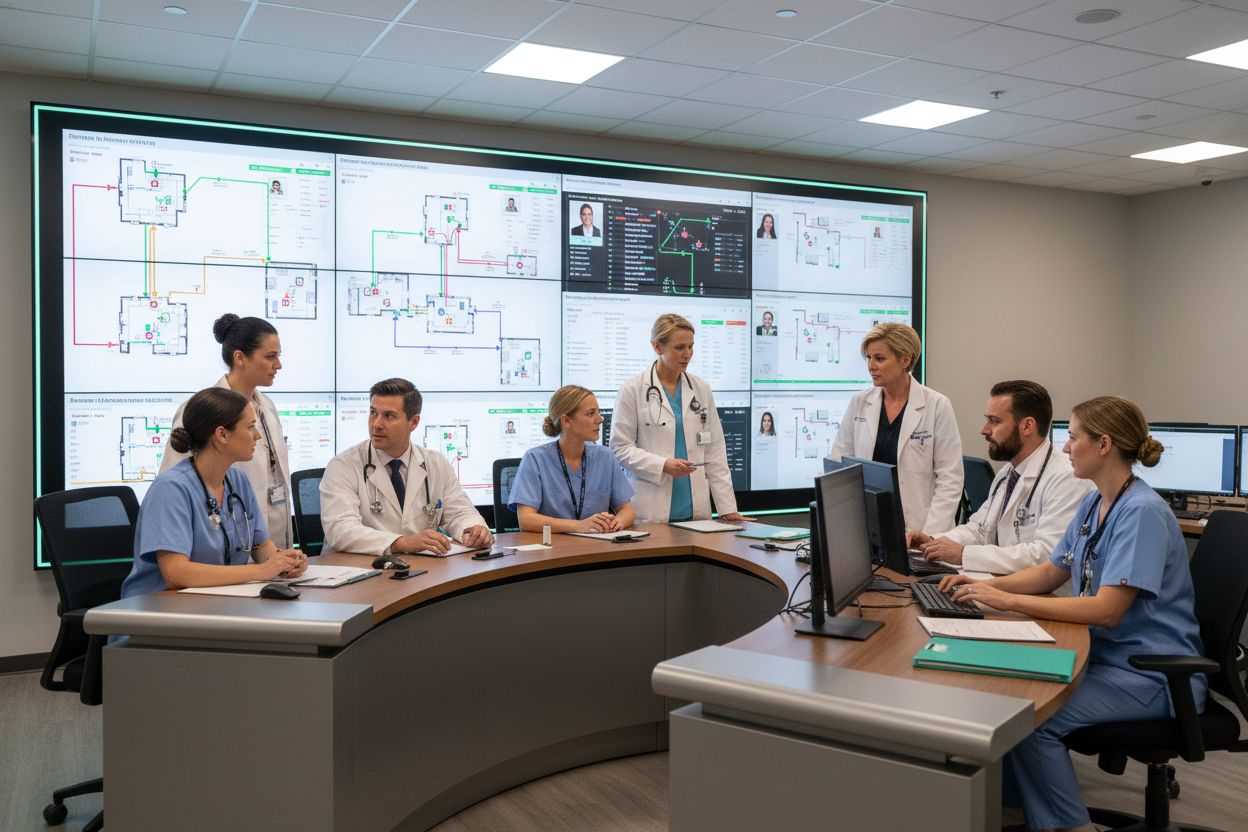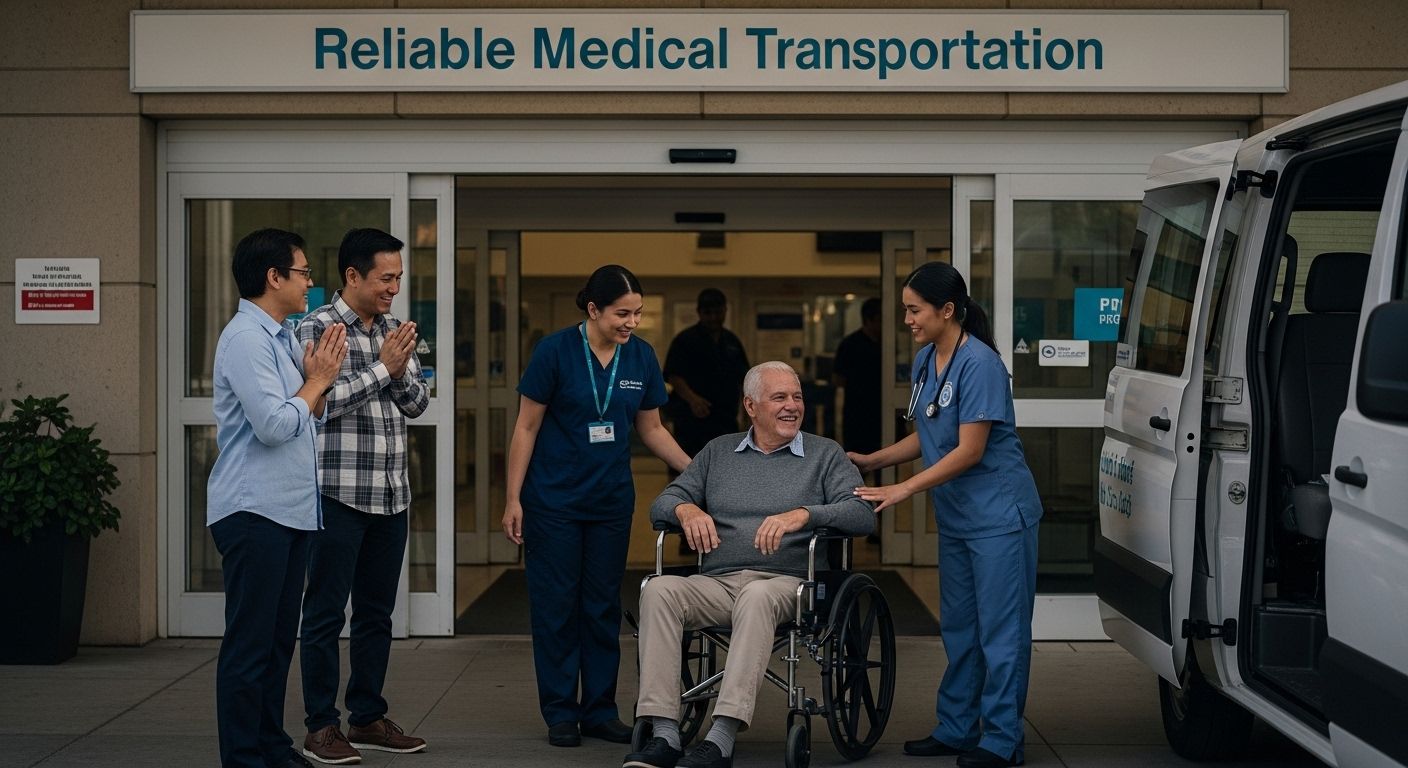Emergency Services Coordination: Complete U.S. Guide
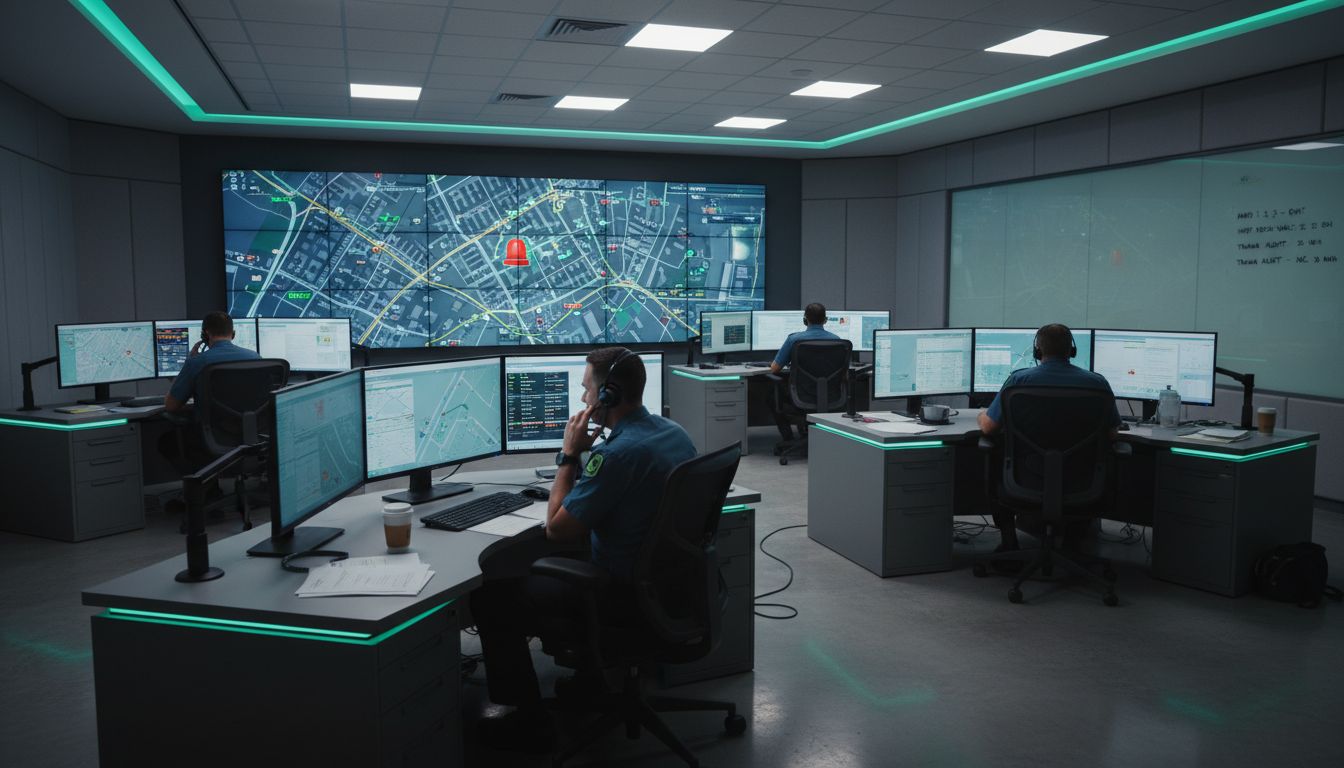
When a medical emergency strikes, every second matters and the right coordination can save lives. Studies show that nearly 30% of delays in emergency care are linked directly to communication breakdowns between agencies. This highlights how crucial seamless teamwork and technology are for timely medical response. Understanding how emergency services work together reveals the steps and tools behind fast, organized care that can make all the difference in urgent health crises.
Table of Contents
- Defining Emergency Services Coordination In Healthcare
- Key Models And Stakeholders In Coordination
- Technologies Streamlining Emergency Response Logistics
- Compliance, Data Privacy, And Regulatory Standards
- Costs, Risks, And Efficiency Implications
Key Takeaways
| Point | Details |
|---|---|
| Integrated Coordination is Essential | Emergency services require seamless collaboration among various agencies to ensure timely and effective patient care during crises. |
| Technological Innovation Drives Efficiency | Advanced technologies like GIS and real-time tracking are transforming emergency response logistics by improving resource allocation and communication. |
| Regulatory Compliance is Critical | Adherence to regulations such as HIPAA is vital for maintaining patient confidentiality and ensuring effective data use in emergency scenarios. |
| Cost-Effectiveness Impacts Responsiveness | Strategic resource management and regional collaboration can significantly reduce costs and enhance the quality of emergency services operations. |
Defining Emergency Services Coordination in Healthcare
Emergency services coordination represents a complex, mission-critical network that ensures rapid and effective healthcare response across the United States. At its core, this system involves seamlessly integrating multiple agencies, resources, and professionals to deliver urgent medical care when every minute counts. According to research from the National Center for Biotechnology Information, emergency medical services (EMS) form an intricate network delivering acute unscheduled care outside traditional hospital settings, interfacing closely with broader healthcare infrastructure.
The coordination process extends far beyond simple transportation. Emergency services coordination involves real-time communication between ambulance services, hospitals, public health departments, and sometimes federal agencies to ensure patients receive the most appropriate and timely care possible. This often requires sophisticated technological systems and protocols that enable rapid decision-making, resource allocation, and patient tracking. Understanding Care Coordination: Guide for Providers and Agencies 2025 provides deeper insights into these complex interactions.
Key components of effective emergency services coordination include:
- Rapid communication protocols
- Interagency resource sharing
- Real-time patient tracking systems
- Standardized emergency response procedures
- Cross-jurisdictional collaboration mechanisms
Critically, this system must operate smoothly across diverse scenarios from mass casualty events to individual medical emergencies, requiring constant training, technological updates, and inter-agency collaboration. The ultimate goal remains consistent: delivering the right care, to the right patient, at precisely the right moment.
Key Models and Stakeholders in Coordination
Emergency services coordination involves a complex ecosystem of stakeholders working together to ensure effective response and patient care. Public health agencies serve as critical orchestrators in this network, leading emergency preparedness efforts and coordinating with multiple local and state partners. According to research from the Rural Health Information Project, successful emergency programs fundamentally depend on robust community partnerships that enable rapid and comprehensive response mechanisms.
Key stakeholders in emergency services coordination include state and federal agencies, each playing unique roles in the response infrastructure. State Departments of Transportation (DOTs), for instance, often serve as lead agencies for Emergency Support Functions (ESFs), particularly in transportation and public works coordination. Understanding Disaster Response Coordination: Key Concepts highlights the intricate relationships between these governmental bodies.
The primary models of emergency services coordination can be categorized into several critical frameworks:
Here’s a comparison of primary emergency services coordination models:
| Model | Main Purpose | Key Stakeholders | Example Activities |
|---|---|---|---|
| ICS (Incident Command System) | Standardize response leadership | EMS Fire Law Enforcement |
On-site command Resource deployment |
| NIMS (National Incident Management System) | Framework for interagency collaboration | Federal Agencies State Leaders Local Responders |
Unified planning Interagency communication |
| ESF (Emergency Support Function) Model | Organize response by core function | DOT Public Health Utilities |
Transport logistics Critical infrastructure support |
- Incident Command System (ICS): A standardized management approach for emergency response
- National Incident Management System (NIMS): Provides a comprehensive framework for interagency collaboration
- Emergency Support Function (ESF) Model: Organizes specific response capabilities across different sectors
Effective coordination requires more than just governmental agencies. Healthcare providers, emergency medical services, hospitals, local law enforcement, and community organizations must work seamlessly to create a responsive and adaptable emergency management ecosystem. The ultimate goal is creating a flexible, interoperable system that can rapidly mobilize resources and expertise during critical moments.
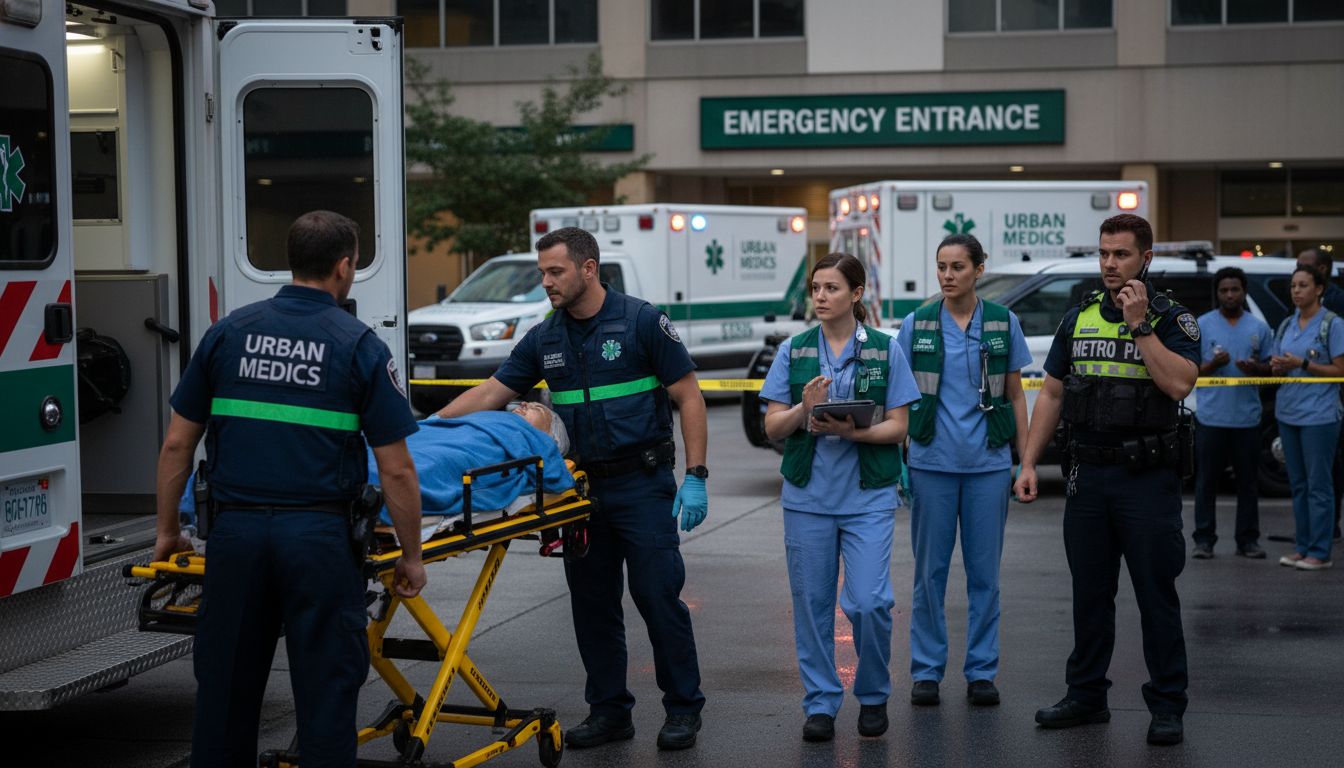
Technologies Streamlining Emergency Response Logistics
Advanced technologies are revolutionizing emergency response logistics, transforming how agencies coordinate, communicate, and deliver critical medical services. Geographic Information Systems (GIS) and real-time tracking technologies now enable precise resource allocation and rapid response coordination across complex emergency scenarios. These technological solutions allow emergency services to make split-second decisions that can mean the difference between life and death.
Modern emergency response technologies focus on creating seamless communication and resource management platforms. Collaborative software systems have become instrumental in bridging communication gaps between public and private organizations. According to research, partnerships leveraging formal agreements and robust communication technologies are vital for coordinating resources during emergencies. Fire & EMS Logistics Software | Improve Response & Patient Transfers demonstrates how integrated technological platforms can dramatically enhance emergency service capabilities.
Key technological innovations driving emergency response logistics include:
- AI-powered dispatch and routing systems
- Real-time patient tracking platforms
- Interoperable communication networks
- Mobile command center technologies
- Advanced telemedicine integration
Critical to these technological solutions are Memoranda of Understanding (MOUs) and standardized operating procedures that ensure clear roles, responsibilities, and technological interoperability across different agencies. The future of emergency services lies in creating adaptive, intelligent systems that can rapidly respond to diverse and unpredictable emergency scenarios while maintaining the highest standards of patient care and safety.
Compliance, Data Privacy, and Regulatory Standards
Emergency services coordination operates within a complex landscape of regulatory requirements and data privacy standards that demand meticulous attention and strategic implementation. State Emergency Management Agencies (EMAs) must navigate intricate legal frameworks while managing resource requests and emergency acquisitions, ensuring every action aligns with established guidelines and legal mandates. This delicate balance requires comprehensive understanding of both operational needs and regulatory constraints.
Data privacy emerges as a critical concern in emergency response scenarios, where sensitive patient information must be protected while simultaneously enabling rapid, effective care delivery. Health Insurance Portability and Accountability Act (HIPAA) regulations play a crucial role in defining how emergency services can collect, transmit, and utilize patient data during crisis situations. What Is Healthcare Compliance? Essential Guide for 2025 provides deeper insights into these intricate compliance requirements.
Key regulatory compliance considerations for emergency services include:
- Adherence to HIPAA privacy rules
- Maintaining patient confidentiality during emergencies
- Securing electronic health information
- Implementing robust data protection protocols
- Ensuring cross-agency information sharing standards
Effective crisis management demands more than just technical compliance. Emergency services must develop comprehensive planning strategies that integrate regulatory standards with operational flexibility, creating systems that can rapidly respond to emergencies while maintaining the highest levels of legal and ethical standards. The ultimate goal remains protecting patient rights, ensuring data security, and delivering life-saving care under complex and challenging circumstances.
Costs, Risks, and Efficiency Implications
Emergency services coordination represents a complex financial and operational ecosystem where strategic resource management can dramatically impact both cost-effectiveness and response quality. Regional coordination efforts have demonstrated significant potential for optimizing resource utilization, transforming what could be inefficient, fragmented responses into streamlined, cost-effective interventions. Ineffective coordination can lead to exponential increases in operational expenses and potential life-threatening delays.
The financial implications of emergency services extend far beyond immediate response costs. Risk mitigation becomes a critical economic consideration, with collaborative approaches between public and private organizations proving crucial in developing more efficient, financially sustainable emergency management strategies. According to government research, integrated regional coordination can substantially reduce overall system costs while improving service delivery. 7 Key Healthcare Cost Containment Strategies provides deeper insights into managing these complex economic challenges.
Key cost and efficiency considerations include:
- Reducing redundant resource allocation
- Minimizing emergency response time
- Implementing shared technological infrastructure
- Developing cross-agency training programs
- Creating scalable response mechanisms
Ultimately, effective emergency services coordination is about striking a delicate balance between financial prudence and operational excellence. By investing strategically in integrated systems, agencies can create responsive, adaptable emergency networks that protect communities while maintaining fiscal responsibility. The goal is not just saving money, but saving lives through intelligent, coordinated resource management.
Transform Emergency Services Coordination with VectorCare
The article highlights the critical challenge of managing timely communication, efficient resource allocation, and seamless collaboration across multiple agencies during emergencies. If you are striving to overcome delays, reduce complexity, and improve patient outcomes in emergency response logistics, VectorCare offers a tailored solution designed to meet those exact needs. Our platform integrates AI-driven dispatching, real-time updates, and automated scheduling features that ensure rapid decision-making while maintaining compliance and data privacy.
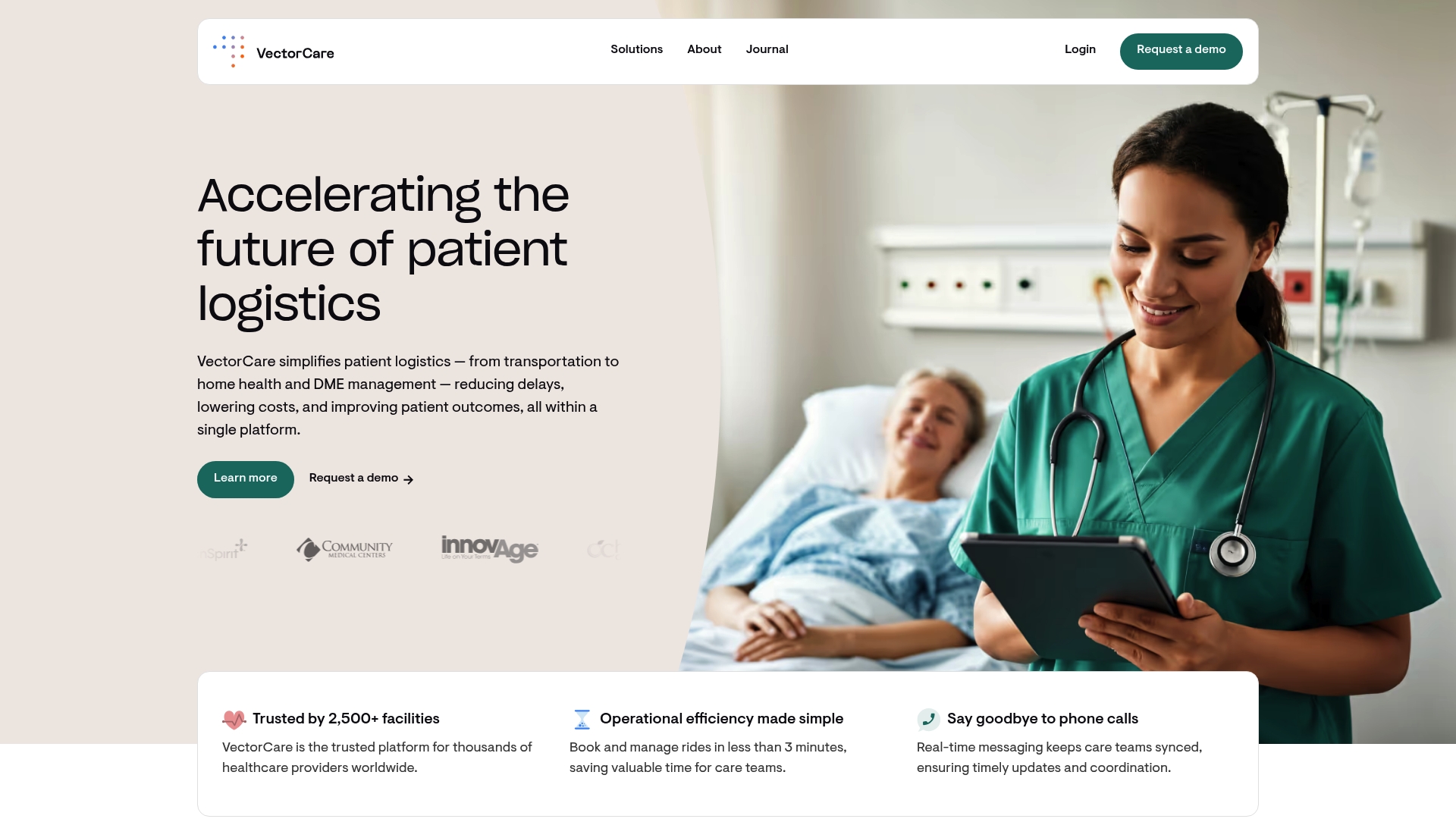
Experience how VectorCare’s comprehensive digital platform can simplify emergency services coordination by streamlining patient transportation and enabling interoperable communication across agencies. Don t wait for the next emergency to expose gaps in your system. Take action today by exploring VectorCare s platform and learn how to boost efficiency, reduce operational costs, and deliver the right care at the right time. Visit VectorCare now and transform your emergency response workflow.
Frequently Asked Questions
What is emergency services coordination?
Emergency services coordination refers to the integration of various agencies, resources, and professionals to provide timely and effective medical care in emergencies. It ensures real-time communication and resource sharing among ambulance services, hospitals, and public health departments.
What are the main components of effective emergency services coordination?
Key components include rapid communication protocols, interagency resource sharing, real-time patient tracking systems, standardized emergency response procedures, and cross-jurisdictional collaboration mechanisms.
How do technologies improve emergency response logistics?
Technologies such as Geographic Information Systems (GIS), real-time tracking platforms, and AI-powered dispatch systems enhance communication, resource allocation, and coordination, enabling swift decisions in critical scenarios.
What regulatory considerations are important for emergency services coordination?
Emergency services must adhere to HIPAA regulations, maintain patient confidentiality, secure electronic health information, and implement robust data protection protocols while ensuring effective information sharing across agencies.
Recommended
- Understanding Disaster Response Coordination: Key Concepts
- Guide to Accessing Non-Emergency Medical Help Effectively
- How to Leverage VectorCare to Evacuate Patients 4x Faster in an Emergency | VectorCare
- Re-imagining EMS & NEMT after COVID-19: The Comprehensive Guide | VectorCare
- Ready in 5 Steps - QuigPro, Inc.
- Government Relocation Services | USPL - US Pro Logistics
